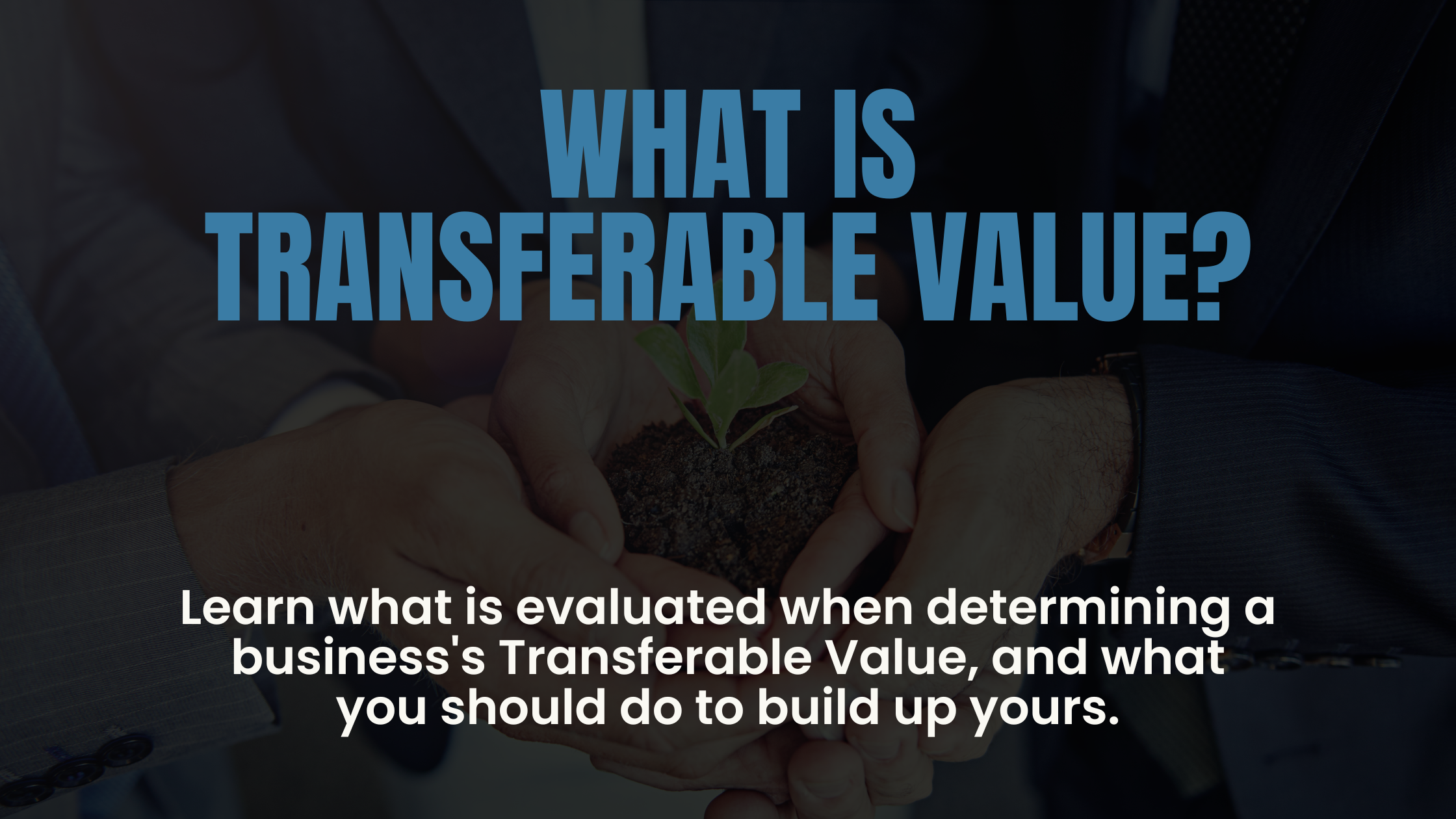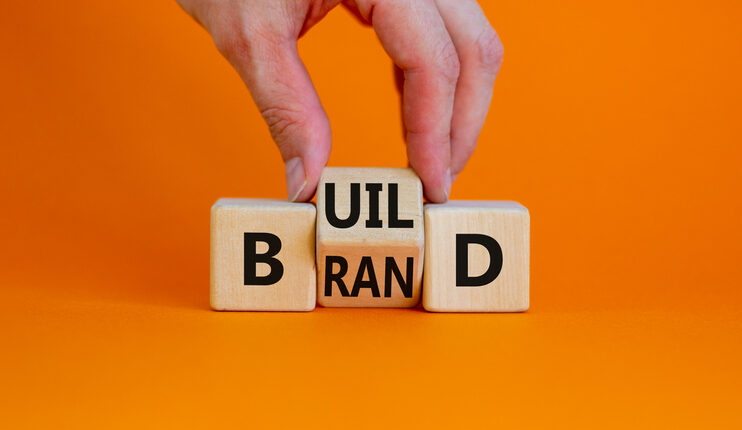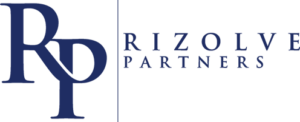

Transferable value refers to the value that a business holds for someone else, without the original owner’s involvement. It is important to understand that transferable value is not the same as profit. Although a business may generate substantial profits, it may not necessarily have transferable value. The transferable value of a business is determined by its ability to function effectively in the absence of its owner, rather than how efficiently the owner manages it.
Peter Christman, the co-founder of the Exit Planning Institute, in his book, “The Master Plan”, identifies the three legs to the stool of a successful exit strategy:
Each of these key elements of a successful exit strategy need to be understood as they are critical. In this blog we will focus on Transferable Value.
The acquirer of a business whether it be a family member, employees, or third parties, are really looking to take possession of a business that produces cash into the future on a sustained basis with predictable results.
To build transferable value in your business, it’s essential to assess your value drivers. By implementing and improving value drivers, you can develop a business that can be transferred to someone else without any significant disruption to its cash flow.
So what are prime examples of transferable value and issues surrounding it that an incoming owner would prize highly and pay fully for?

A strong team of human resource assets that work towards a common vision and set of goals within a defined culture that establish the boundaries for strong working relationships. Within that team would be competent management that can help ensure the smooth running of your business, maximize profits, and make informed decisions that drive growth towards the Company Vision.
Supporting management should be a balanced team with multidisciplinary skills that facilitate the execution of the Plans to individually and collectively defined goals and who motivate each other. The key quality is a team that can execute a plan consistently to increasingly valuable ends.
Examples of issues found in due diligence that would raise value in the mind of the buyer:

Maintaining good financial records is another crucial step in building transferable value in your business. This includes having a clear record of your revenue, expenses, and cash flow. By keeping accurate and up-to-date financial records, you can track your business’s financial performance, identify areas for improvement, and demonstrate to potential buyers or investors that your business is financially stable and well-managed.
Here are some reasons why maintaining good financial records is important:
Being able to deliver future projections and estimate the net cash flow that the business will generate, informs decision making and enables nimble management as economic conditions change. Evidence of the repeating cycle of success: Strategic plan; Budgeting process; Performance review; and Rolling forecasting, demonstrates that the business possesses up-to-date information on goal attainment as the central focus of its tactical decision-making process. It also highlights the business’s capacity to adapt and modify plans to embrace emerging opportunities and address potential risks on a timely basis.
During due diligence, a buyer will be assessing:
Issues that could create transferability issues are: Loss making businesses; qualified audit opinions; or contingent liabilities such as the outcome of current lawsuits.

A company contract is a legally binding agreement between two or more parties that outlines the terms and conditions of their business relationship. Contracts play an important role in protecting business interests, reducing risk, and increasing transferable value.
Having clear legal contracts in place that document agreements with Customers, Suppliers, Employees, Partners, Shareholders and other key stakeholders to the business is important for a third party, particularly when the buyer is purchasing shares of the company.
It is commonly the case that Companies have short-cut creating legal documentation as they grow and have avoided incurring legal fees by “copying” other company document formats. While this serves a purpose at the time (keeping costs down), it is important for a lawyer to review the existing documents to confirm that they are appropriate for the current business conditions especially in contemplation of a change of control.
Given the focus of the buyer on the future and sustainability and growth of current business, the existence of patents to protect intellectual property into the future is of heightened importance – even if the patent protection is in place but “pending”.
Finally, having no disputes outstanding and a clean record is valuable. Conversely, the existence of lawsuits is often a blocker to transferability. It is therefore highly recommended that legal disputes are settled well in advance of any transaction.

The process and systems that exist in a company to identify, prospect, engage, excite, sell to and convert prospects and customers in the Sales process is a key leverageable asset. A buyer will want to ensure these are in place to facilitate their plans to operate and grow the business into the future. The absence of good quality, repeatable systems is likely a significant issue for a buyer that can negatively impact transferability and business value.
In particular, the existence of a sales pipeline and a sales back log will be the subject of detailed due diligence, and the probability of conversion of the pipeline into future cash will determine how transferable the business is.
During due diligence, the quality of the processes and systems will be assessed.The existing pipeline, as often captured in a CRM, will be scrutinized and is often key to the value placed on a business.
Transferability will be impacted where:
The repeatability of sales to customers should be emphasized during due diligence both historically and in showcasing the ability to convert prospects.

Developing a strong brand is a critical step in building transferable value in your business. A strong brand creates a lasting impression on your customers, making your business more memorable and recognizable. It can differentiate your business from competitors, increase brand recognition, build customer loyalty, support premium pricing, and provide a competitive advantage. By doing so, you can create a more attractive business for potential buyers or investors.
The transferable value is often documented in:

Operational capacity is the business’s ability to fulfil orders in a timely manner such that the customer is satisfied that the brand promise has been fulfilled time and again.
The buyer of a business is interested in whether the Operations of the systems of fulfilment and Customer service are repeatable and set up such that the promises made by Sales are satisfied no matter what time of year and in spite of different influences on the business.
They also focused on whether such practices are scaleable and therefore sustainable. In this regard they would want to know if Standard Operating Procedures (“SoP’s”) are in evidence and are teachable to facilitate higher volumes.
Transferable value is contained in:

In summary, this presents several key value drivers and indications for you on what represents transferable value. This is by no means an exhaustive list, and you should seek professional help in identifying transferable value in your business. Your company’s transferable value needs to be showcased and emphasized during due diligence with prospective acquirers.
As a final thought, the “three legs to a stool” is a powerful symbol in this context when you consider what happens to the three-legged stool that is short one leg. Note that 75-80% of businesses fail to sell when they are brought to market *. Beware ignoring the components of a successful exit strategy and in particular the drivers of transferable value.
By focusing on the key value drivers, you can build transferable value in your business and make it more attractive to potential buyers or investors. It is important to remember that building transferable value takes time and effort, but the long-term benefits can be significant.
* Tom West, Business Reference Guide

Rizolve Partners understands what needs to be done to achieve sustainable, high-quality growth.
To learn more, check out our process expertise tips sheets here.